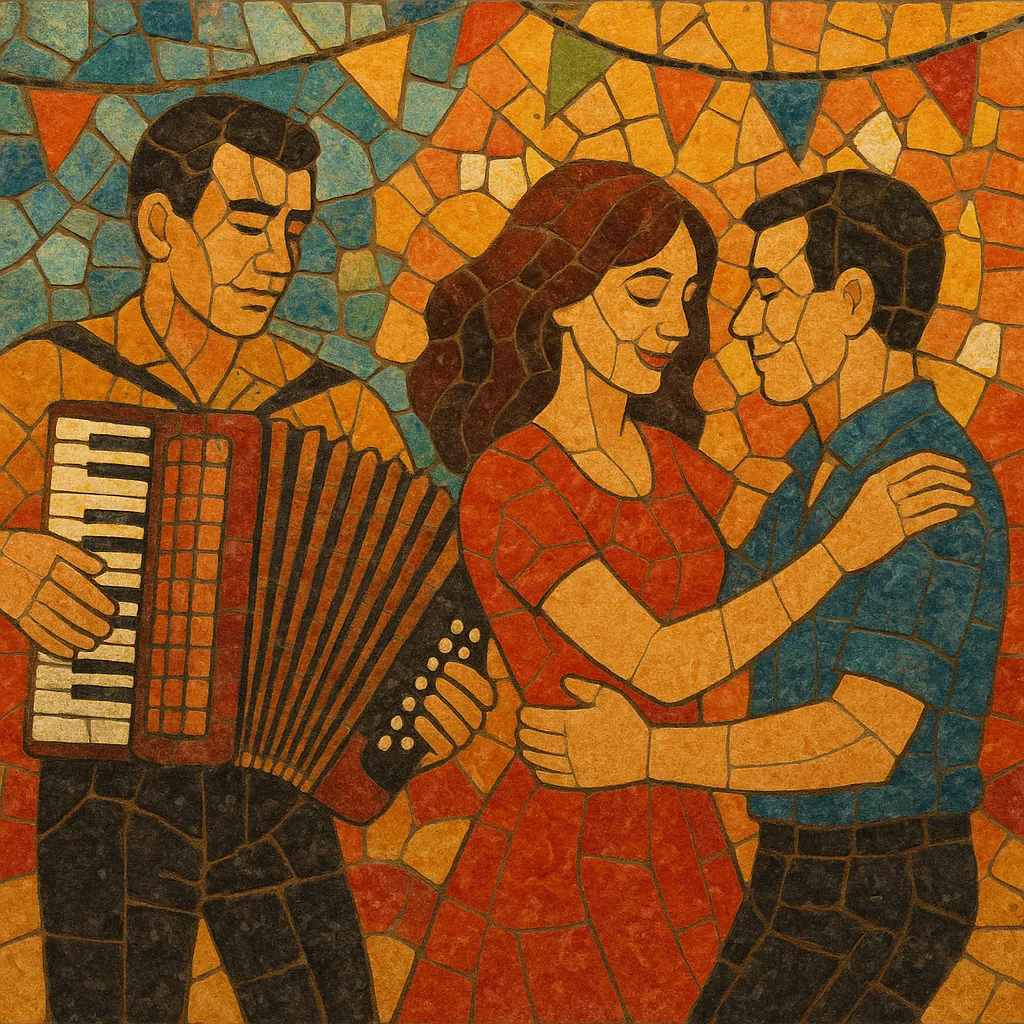Pimba is a strand of Portuguese popular music known for its catchy, dance‑ready feel, simple harmonies, and humorous, often double‑entendre lyrics. It thrives in summer fairs (arraiais), village festivals, and televised variety shows, where audience sing‑alongs and communal dancing are central.
The sound is driven by bright accordion or synth leads, steady 2/4 or 4/4 drum machine grooves, and memorable choruses built for instant recall. Themes orbit everyday life, romance, cheeky innuendo, and rural festivity, giving the music a kitschy, good‑humored charm that many embrace precisely for its unpretentious, communal spirit.
Although artists with a similar ethos existed earlier, the label “pimba” became widespread in the mid‑1990s, crystallizing a style that sits between Portuguese folk dance rhythms and pan‑European schlager/pop aesthetics.
Artists like Quim Barreiros were already crafting humorous, danceable songs with accordion leads and innuendo‑laden lyrics, performing at village festivals, romarias, and popular saints’ celebrations. This repertoire drew on Portuguese folk dance feels (marchas populares, corridinho‑like pulses) while adopting pop song forms and inexpensive electronic accompaniment.
The term “pimba” gained currency in the mid‑1990s, especially after Emanuel’s 1995 hit “Pimba Pimba,” which gave a catchy label to an existing practice. Television variety programs and summer tour circuits amplified visibility, and artists such as José Malhoa, Ágata, Toy, and Ruth Marlene helped standardize the sound: major‑key hooks, playful storytelling, and a straight, danceable backbeat.
Through the 2000s and 2010s, pimba remained a staple of Portuguese festive life and TV entertainment. Production modernized (cleaner digital drums, brighter synths), while the core formula—simple harmonies, sing‑along choruses, and cheeky humor—stayed intact. Newer performers like Rosinha refreshed the repertoire with contemporary references and stage personas, and legacy artists continue to pack dance floors during the Santos Populares season.
While sometimes labeled kitsch or lowbrow, pimba is widely appreciated for its communal spirit and function: it is music for dancing together, laughing together, and celebrating shared, local culture.


